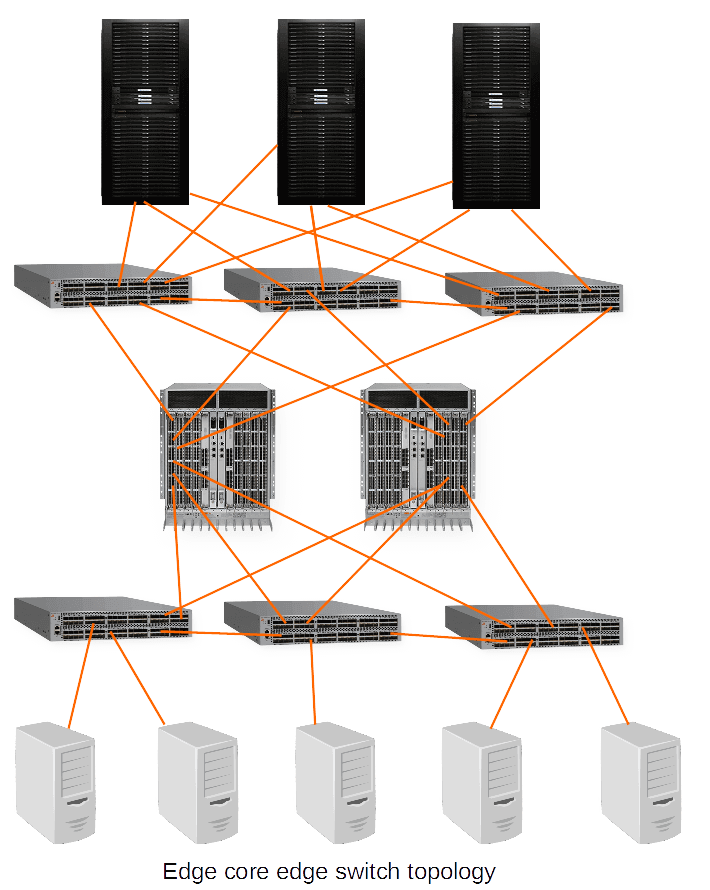Fibre Channel Topologies
Fibre Channel Topologies
Topology is the way of approach to connecting devices to form a network.
Fibre Channel-based networks support three types of base topologies:
- Point-to-point
- Arbitrated loop
- Switched fabric
Switched fabric further classified into a few more topologies
- Traditional topologies
- Single switch
- Cascading/ring topology
- Mesh topology
- Tiered topologies
- Core edge topology
- Edge core edge topology
FC SAN topologies are illustrated in the below diagram
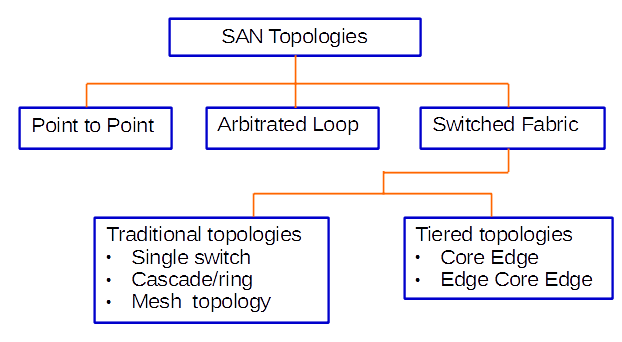
Point-to-point
A point-to-point topology is the simplest topology.
In point-to-point topology host and storage are connected directly through a cable.
The advantage of point-to-point topology is transmitting speed is high, but the limitation is system expansion.
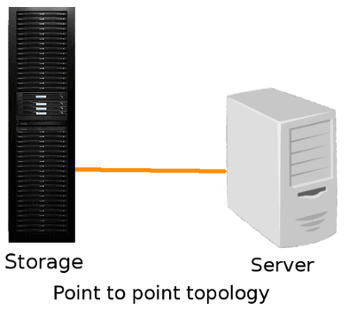
Arbitrated loop
In a Fibre Channel Arbitrated Loop (FC-AL) topology devices are connected in a ring fashion where the transmitter of one node transmits data to the receiver of the next node.
Fibre channel Arbitrated Loop (FC-AL) can be formed by using a Fibre channel hub.
In FC-AL, all devices on the loop share the bandwidth. The total number of devices that might participate in the loop is 127. For practical reasons, however, the number tends to be limited to not more than 10 and 15.
In the Fibre channel Arbitrated Loop (FC-AL) devices are identified by Arbitrated Loop Physical Address (AL_PA).
Total bandwidth is shared by all devices in the loop and only two devices can communicate at a time. This limitation will reduce the system efficiency.
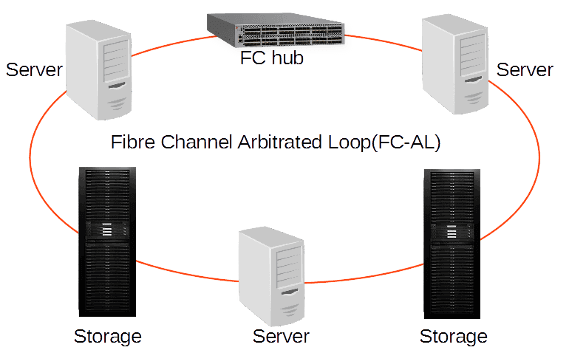
Switched fabric
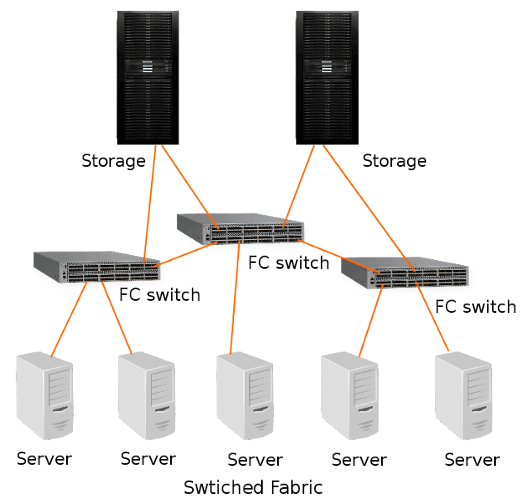
If Fibre channel switches are used, then it is called Switched fabric topology. In this topology, all devices are connected and communicated through switches
The advantages of the switched fabric are:
- Nodes among the devices are allowed to work at the same time to increase the efficiency of the subsystem.
- Switched fabric supports a redundant path between multiple devices to increase system availability.
- Zoning feature for data protection (It restricts the visibility of the target to a particular source).
- Non-disruptive scalability (we can add switches to fabric/network online without taking any downtime).
In terms of switch interconnections, the switched fabric topologies can be classified as the
following types:
- Single switch topology
- Cascaded and ring topology
- Mesh topology
Single switch topology
The single switch topology has only one switch and has no inter-switch links (ISLs).
It is the simplest design for infrastructures that do not need any redundancy. Because of the issues of it introducing a single point of failure, this topology is rarely used.
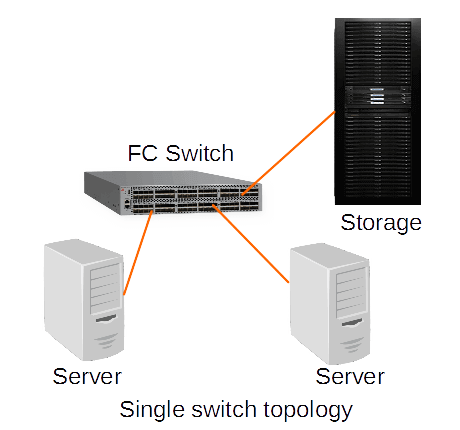
Cascaded and ring topology
In a cascaded topology, switches are connected in a queue fashion, as shown below.
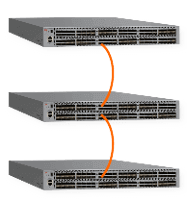
Even in a ring topology, the switches are connected in a queue fashion, but it forms a closed
ring with an additional inter-switch link (ISL), as shown in the below diagram.
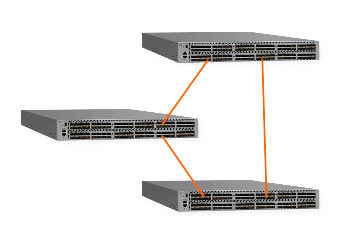
Mesh topology
In a full mesh topology, each switch is connected to every other switch in the fabric, as shown below
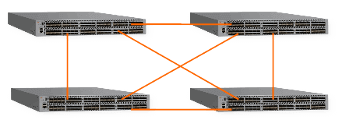
In terms of a tiered approach, the switched fabric can be further classified with the following topology:
- Core-edge topology
- Edge-core-edge topology
Core-edge topology
In core-edge topology, high performance director switches are used as core switches.
In core-edge topology, the servers are connected to the edge fabric and the storage is connected to core switches. Core and edge switches are interconnected to make communication between servers and storage.
An illustrated diagram of core edge topology is
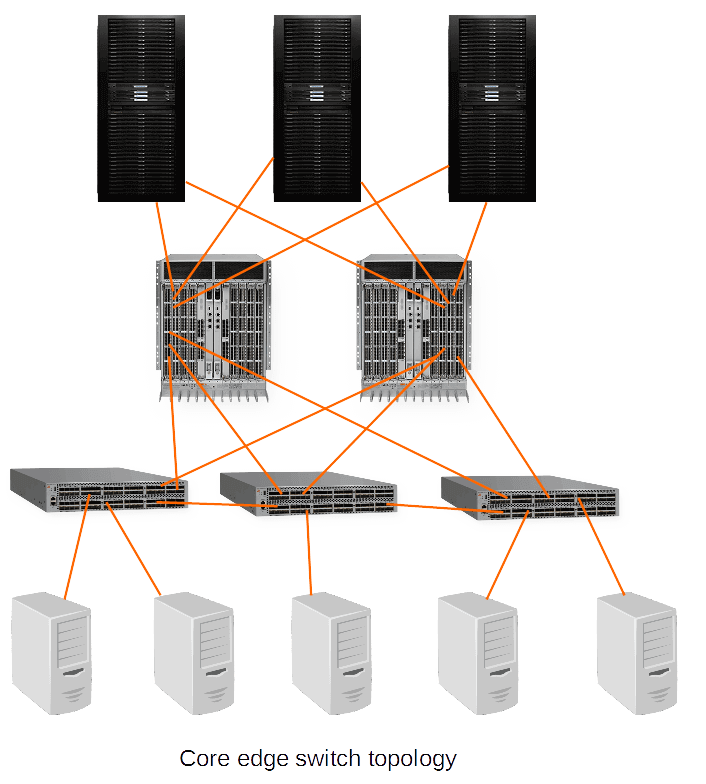
Edge-core-edge topology
In this topology, the server and storage are connected to the edge fabric and the core switch connectivity is used only for scalability in terms of connecting to edge switches. This configuration expands the SAN traffic flow to a long distance. Also, the servers might be isolated to one edge and storage can be at the other edge which helps with management.
